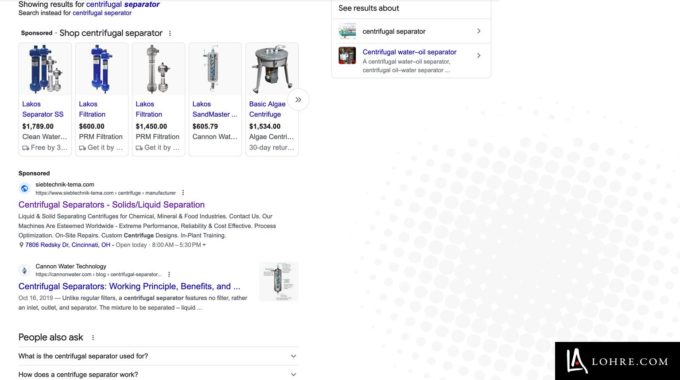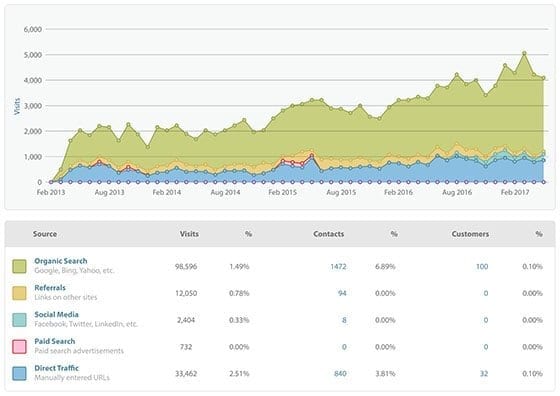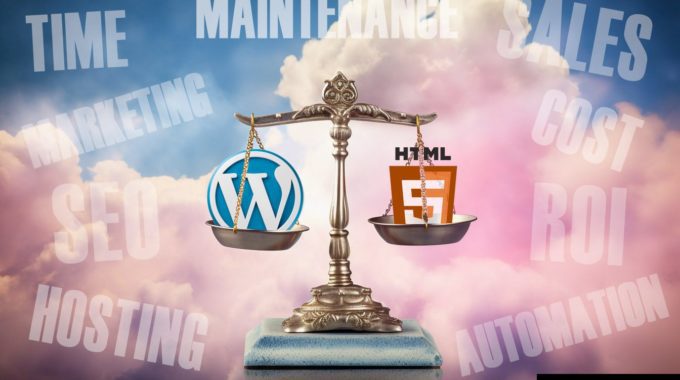In the vast digital landscape of today, a website isn't just a static entity. It's…

How does Google Adwords work?
How does Google Adwords work?
PPC ads work by displaying your ad in response to visitors searching on specific keywords.
We break up a product offering into Google Adwords ad groups which each focus on a general product category with its own keyword groups.
A typical average bid would be $2. If it’s higher, we review whether the click results in the visitor going to your “Contact Us” page, spends more time than average on your site (2 minutes) or looked at more than the average number of pages (3 pages). For keywords that result in higher site interaction, we are willing to pay more, up to around $3 per click… but we shouldn’t have to. If the SEO is done right for a landing page, the right keywords and key phrases are there, the site loads well, if visitors are staying, ad quality goes up. When ad quality goes up, per-click prices go down and this is every successful SEM (Search Engine Marketing) campaign relies on good landing pages.
A typical global industrial process equipment company may have 300 English, 200 German, 100 French, 100 Spanish and 50 Russian keyword phrases in their list. We have recently reduced the keywords to focus only specific product categories we want to focus on for one client. There are usually about 100 negative keywords, if these words are used in the search, our ad won’t be shown. If for some reason an ad is showing that is has a low quality score, we know to either refine the ad, refine the keywords, or refine the landing page in order to get better performance at a much-better cost.
Bidding is set to get in the top three spots.
You only get charged when someone clicks on your ad.
Quarterly we review a long list of suggested key words that Google provides and select relevant ones to add to our ad groups. Search engines create the suggested keywords from the keyword phrases related to the phrase searched on. Here’s the list for the page above:
- centrifugal separator how it works
- centrifugal separator wikipedia
- centrifugal separator design
- centrifugal separator working principle
- centrifugal separator cooling tower
- centrifugal separator for milk processing
- centrifugal separator pdf
- westfalia separator manual
Google is used 80% of the time in the English-speaking world. Bing and others in the rest of the English-speaking world. Google isn’t used in Russia and China. We use Yandex in Russia.
For example, for “centrifugal separator” last April, Tema’s ad comes up number four (in this search). For some general numbers, it may have been shown 264 times and clicked on 31 times. Over half (17) may have interacted with the site (considered a “conversion” by us) the visitor looked at more than average site pages, spent more time than average on the site or went to the client’s “Contact Us” page. It may about cost $2 per conversion which we consider to be a good ROI. We’ve limited our bid to $3 to be in the top three on the page. Google estimates the top position bid to be $5 and that is what Industrial Centrifuges may be paying. Oilfield may be paying about $3 per click. Here are the other suggested searches which we will consider advertising for.
Typically we send the client their keyword list four times a year to review. They review them and suggest any other keyword phrases we can do further research on. If they are a good fit for our ROI (Return on Investment) standards, we’ll add them to their Google Adwords campaign.
In summary, it is very hard to rank naturally (free) in search engines. You need to have pages that are optimized for each keyword phrase, links to your site from sites with high authority (like Wikipedia and the trade journals), and a share several blogs posts a week on those keyword phrases across LinkedIn, Google+, Facebook and Twitter. Even then, though top placement in organic search is ideal to bring your website more of the right visitors on less money, if you are relying solely on organic search placement, you will find competitors ads above your number one spot in search.
Paying for Adwords is the most cost effective way to be sure your content gets found for relevant searches at the top of the page, especially if you don’t have someone who enjoys internet marketing, writing, research and engaging with groups of visitors around the world. Here are the results we have had with one client that doesn’t use Google Adwords but invests in industrial copywriting and content website development each month. With top search placement for most every relevant keyword, they enjoy more visits from organic search. These visits are often more high-quality than PPC ad clicks.

If you only use Adwords and don’t continually add relevant content to your site by blogging and social media, your traffic won’t grow. It will just stay the same and you will continue to pay for adwords. The only way to grow your traffic is by advertising, placing articles in your industry’s trade journals, blogging and social media. It’s difficult but fun marketing. You need a passionate communicator that can do the work without supervision.
One thing we don’t like about adwords is that they only convert 60% of what organic traffic produces. You would think it would be the other way around. It’s part of the mystery of the “Black Hole” of adwords. Be careful out there, take every precaution you can to not waste your marketing dollars. Normally industrial ads only run 9-5 M-F in the time zone you’re showing your ads in. As much as Google Adwords would like you to think otherwise, no one is purchasing a $25,000 centrifuge at 3 am on a Saturday night and we can’t understand who’s clicking on our ads if we run them at that time.
Where as on the other hand, great content is the gift that keeps on giving, for free. That’s the way great marketing should be. We’re afraid that many companies’ marketing departments only do Adwords just so the C-Suite sees their ad and thinks the company’s marketing is working well when it may have a lower ROI than good inbound marketing with great content.




